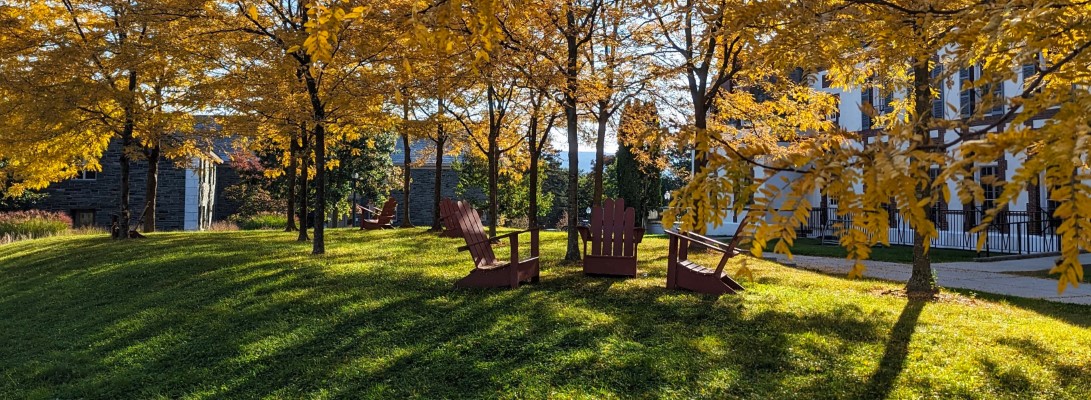Middlebury Magazine asked me to help with a story a month or so ago-they were looking for the 10 oldest trees on campus. Naturally, I gave them 12. There were a couple I just couldn’t leave off, and I walk around and still see a couple more I should have added.
Our campus features many spectacular trees, but surprisingly none of them are very old. Charles Baker Wright, Professor Emeritus of Rhetoric and English Literature , in the Middlebury College News Letter of 1931 talks of the story of campus trees, and how early in the history of the college was an old time notion that “trees wouldn’t grow on that hillside”, and how finally in about the 1830’s trees were planted wholesale, so thick that 70 years later Old Stone Row was a ‘veritable thicket’. Other areas of campus were likewise barren of trees, but didn’t have the donations to plant like near the Row. (as always, click on the picture for larger version) (especially to see the guys in the top hats)
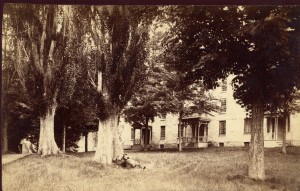
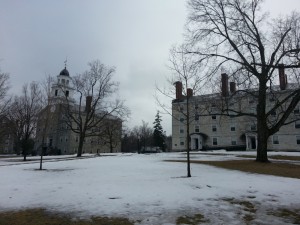
Note large Sugar Maple in picture, smaller in picture above
Some of the more dramatic pictures were taken along the back of Old Stone Row, on the road that was called Waldo Avenue.
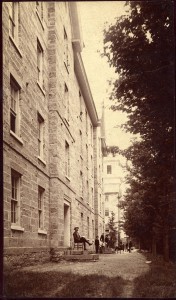
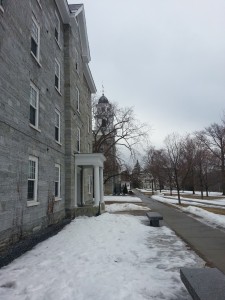
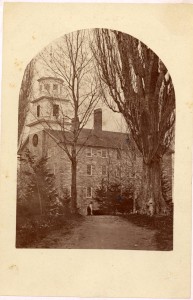
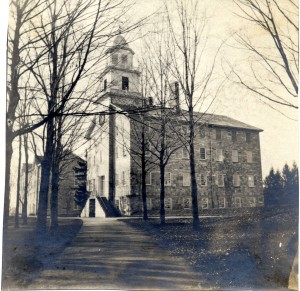
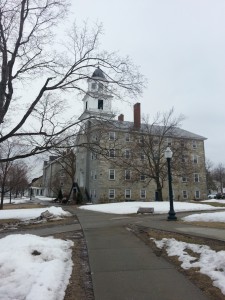
Another sad chapter in the arboreal history of Middlebury is Dutch elm disease, which you can read much more about on other pages in this blog. Many areas presently bare of canopy from shade trees are previous Elm locations. This is not all bad-views from Old Chapel Road to Mead Chapel are greatly enhanced by the clear lines of sight.
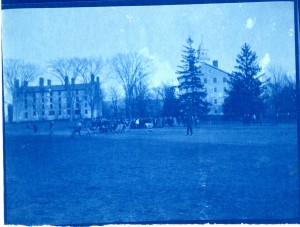
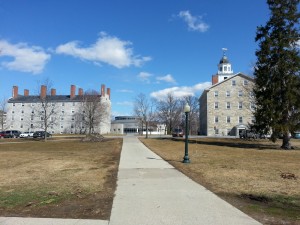
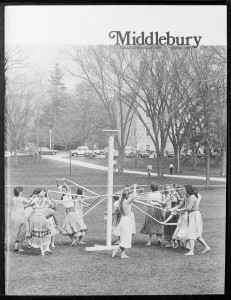
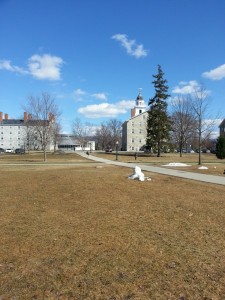
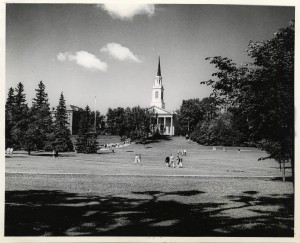
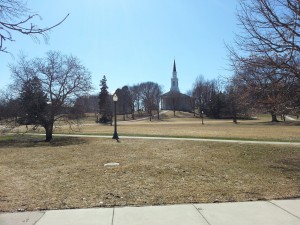
Trees have a lifespan, like us, and it may be useful to think about tree years the way many people think about Dog years, but with no set figure to multiply. A redwood is ancient at 2000 years old, Bristlecone Pines date to 3500 years old, while a Poplar tree is old at 40. I’d venture to say an old tree for Vermont is 300, with precious few of them remaining.
A great grandma of all the trees on the Middlebury campus is a spectacular Bur Oak on the north side of the Mahaney Center for the Arts. Fellow horticulturists have estimated an age of easily 250 years old. Even in tree years, this one’s sitting on the porch rocker being waited on hand and foot. Trees like this, particularly oaks, were often left as boundary markers for property, and would be referenced in deeds and other legal documents. Aerial photographs of the area show this tree sitting next to Porter Fields, the combination baseball/soccer fields for years. It was there long before Baseball. I’ve written about this tree before.

Paper Birch is, like all birch, an early successional tree, born to live fast, set seed, and die young. This tree isn’t very old in human years (I’m guessing about 85-90), but a mature birch is only 45-50. Proof that the right tree in the right spot will do wonderful things. This tree would be a grandparent too, one of those impatient ones yelling at the grandkids to keep off the lawn. It is safe to assume this birch was planted by the former owners of the house (the McKinley’s, I think, as that is what we call the house). Paper birch is an extremely popular landscape tree, but prone to many diseases which shorten the lifespan.
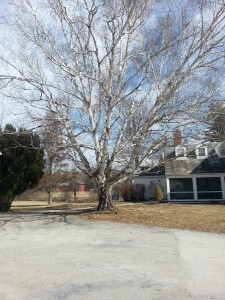
Nearby there is an elm along Route 30 next to the field house. I often wonder about all the construction it’s been watching over the years. Our guess is about 175-200 years old, an old survivor from when elms were transplanted from the woods to line the rudimentary roads of the new country. Old photographs show elms lining both Route 30 and 125, and we work hard to save the few that remain. This one’s middle aged in tree years, elms can go for many decades more than this one has been around.
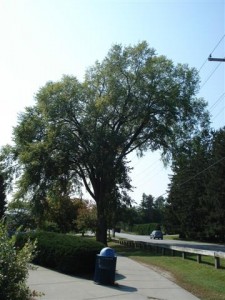
Norway Spruce grow fast when young, and get leisurely in their middle age. The massive Norway spruce north of McCullough was planted as part of a windbreak to protect the athletic fields next to the gym. Photographs from 1890 show already mature trees next to the baseball field, making this spruce easily over 150 years old. This tree is unusual for a Norway spruce in that the main stems are going through reiteration-the bottom stems forming entirely new trees, so looking up from the base into the canopy of this tree one would see multiple trees sharing a single trunk. This is much more common in Redwoods, but clearly this spruce dreams big.
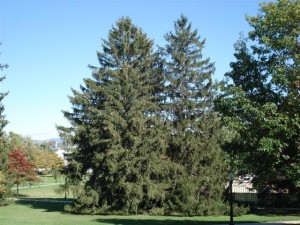
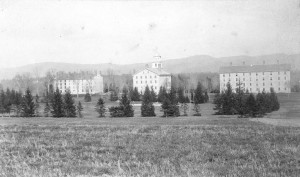
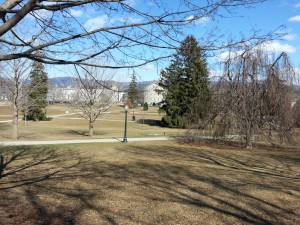
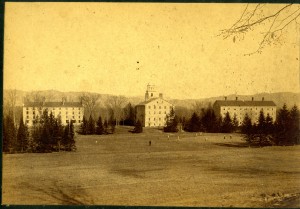
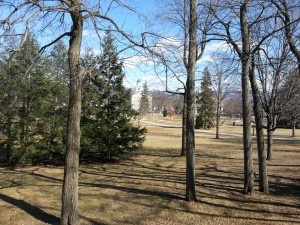
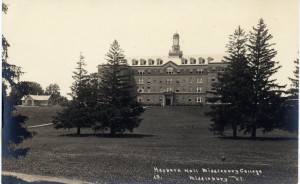
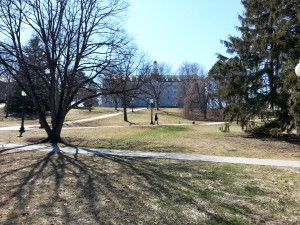
Up the hill from the spruce is a Black Walnut, probably 80-100 years old. It’s a middle aged tree as well, but was part of the extensive gardens of Maude Mason planted to the south of Hepburn. Most walnuts live to about 150 years old, but in the right location (which I hope this spot is) can go over 400.
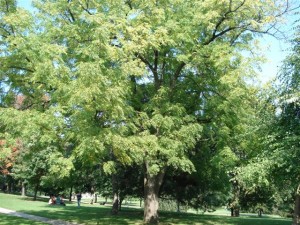
This walnut was probably planted as part of extensive gardens to the south of Hepburn at the beginning of the century. There was an old cottage nearby as well. The only remnants left of this landscape is a small garden with a plaque on the top of Stewart Hill dedicated to Maude Owen Mason, ‘who planned and planted and tended it from 1916 till 1937’. The garden has since been overcome by Mugo pine, a great example of breaking Tim’s first rule of landscaping-‘If it looks good when it goes in, it’s too crowded’.
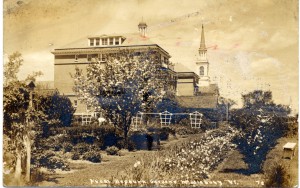
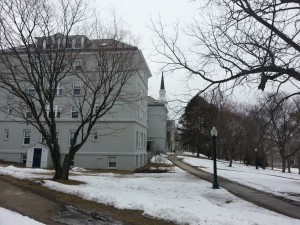
The former Battell Cottage, now known as Adirondack House, has two very large Austrian Pines in the front yard facing Route 125. A picture from 1929 shows one of them fully mature, making these an impressive 150 years old or more. In tree years, very old.
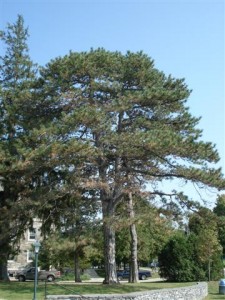
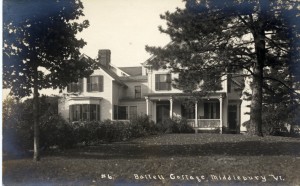
Austrian Pine on right side
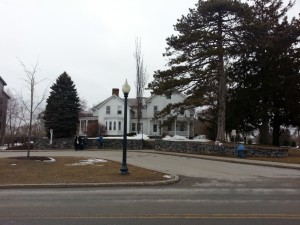
3 Black Maples, a close relative of Sugar Maple, remain in a row along Storrs Walk next to Old Chapel. This is the area of campus heavily planted in the 1830’s, and these are the only remaining trees left. At 185 years old they are reaching the end of their typical lifespan, but we are actively preserving them, and hopefully will be around much longer. I’ve written of Black maples in the past.
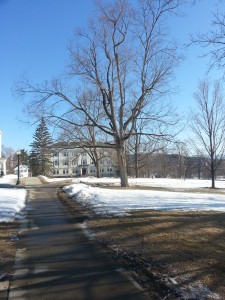
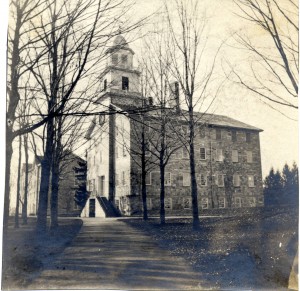
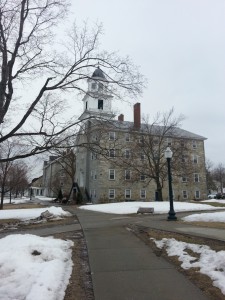
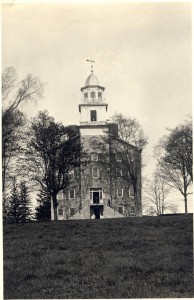
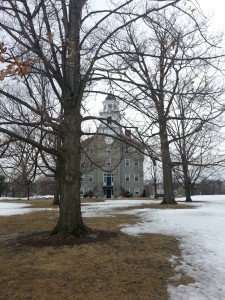
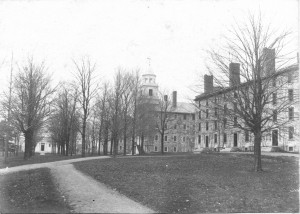
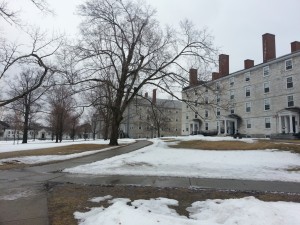
A photograph from 1947 shows a couple of Sycamore trees planted alongside the road across from the Student Union Building, where Proctor is now. The trees were reaching maturity then, so they are only 85 years old, but one is massively large, once again the right tree in the right spot. So much for trees not growing on that hillside.
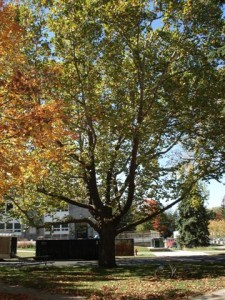
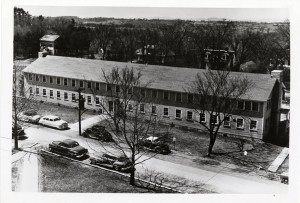
Sycamore tree in center of photo
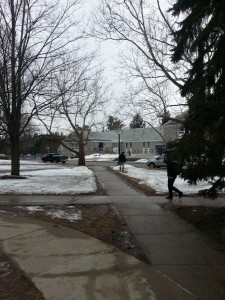
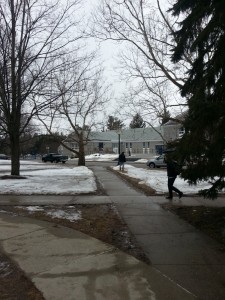
Near the Gravity monument by Warner science is a Littleleaf Linden, a tree the British call Lime trees. This one sets the state record for size, with an estimate of age of over 100 years. Its growth rate has slowed considerably; she’s reaching old age gracefully now.
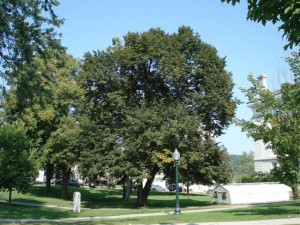
Aerial photographs from 1942 show the Pin Oak to the south of FIC gracing the front yard of a house there, with Chateau in the back yard. We estimate this tree at about 125 years old, a teenager for an oak.
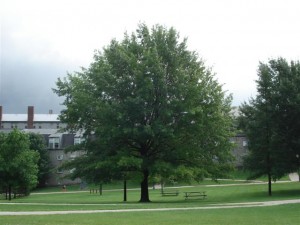
Same aerial photograph-an apple planted next to what looks like gardens. This makes sense, as that entire area of campus has a proliferation of Pear trees similarly old we know nothing about. This tree is probably about the same age as the Pin Oak, but quite a bit older in Tree years.
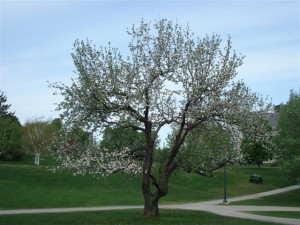
The oldest tree (in tree years) on the campus is also one of the youngest in human years. Yellowwood is a pretty little tree with Beech like bark and pendulous white flowers in the early summer. The tree tends to branch low with multiple trunks, and falls apart after 50 years or so. Ours is probably 75, with multiple steel brace rods holding the trunks together.
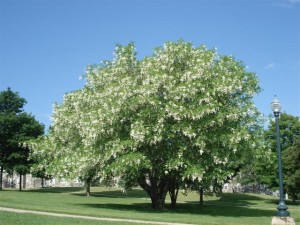
Many thanks to the Digital Media archives, where I spent an enjoyable day in front of the woodstove on the laptop-any use of their pictures should go through them (I’m talking to you, Pinterest) All new pictures are my own.
